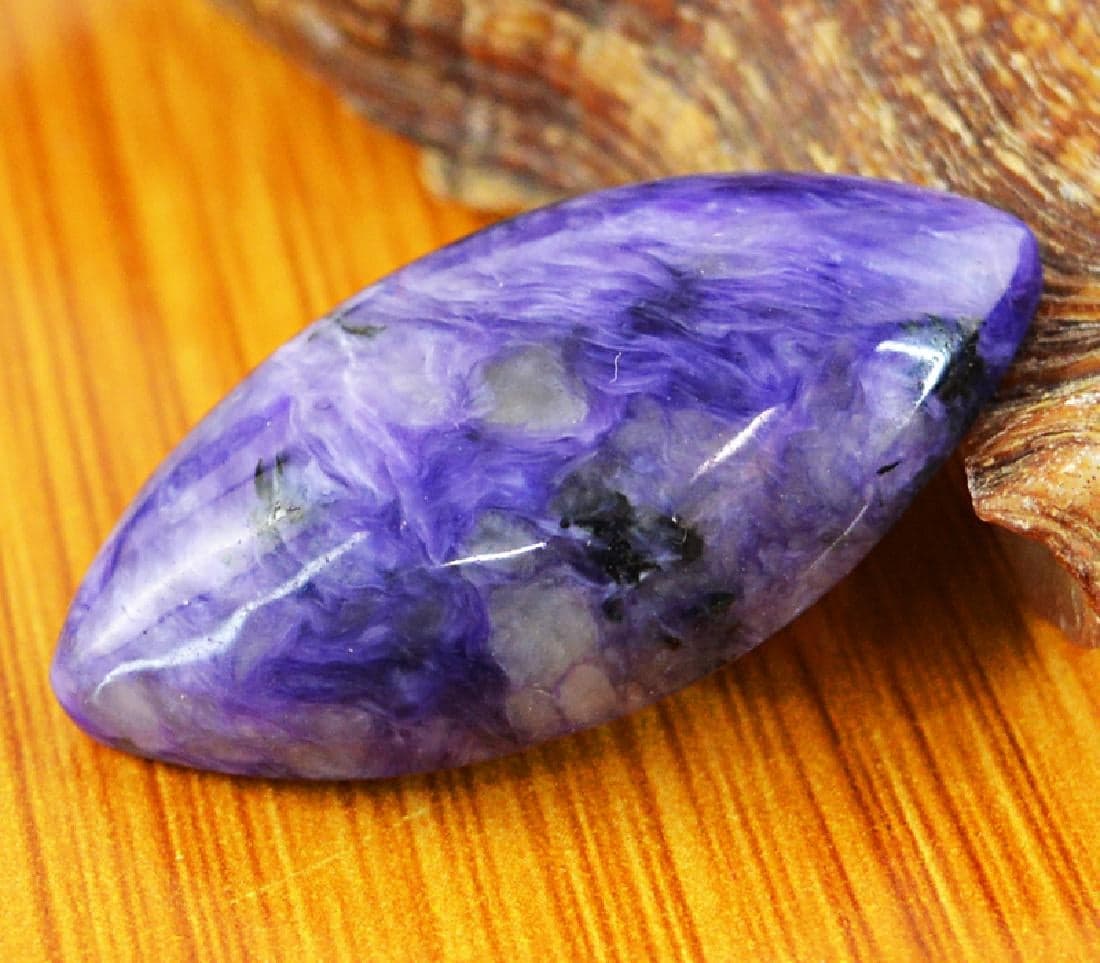Charoite Value, Price, and Jewelry Information
With light to medium dark purple colors and swirling patterns, charoite is one of the few gemstones so distinctive that a gemologist can make a sight identification with confidence. No other material is likely to be mistaken for it.
1 Minute Read
With light to medium dark purple colors and swirling patterns, charoite is one of the few gemstones so distinctive that a gemologist can make a sight identification with confidence. No other material is likely to be mistaken for it.
Start an IGS Membership today
for full access to our price guide (updated monthly).Charoite Value
A bargain gemstone, even the highest quality charoite pieces cost a few dollars a carat, at most. If you look for a lovely pattern, pleasing colors, a good polish, and an appealing shape, you can’t go wrong. A silky, slight to moderate chatoyant glow will add value to a piece.
Comments
Like lapis lazuli, the gemstone we call charoite is actually a rock. However, it's almost purely composed of the mineral charoite. This dominant mineral gives this material its distinctive range of purple colors, which can vary even within a single specimen. Its characteristic swirling pattern is due to its fibrous crystals arrayed in complex, interlocking patterns. The mix of other minerals includes prismatic orange tinaksite crystals, pale greenish grey microcline feldspar, and greenish black aegirine-augite crystals. As a result, this is a unique, highly ornamental rock. Due to this mixture, charoite also produces scenic stones, pieces that show so-called "natural pictures" that may resemble landscapes or even objects.
To say that the mineral charoite is a silicate of complex composition is an understatement. For example, one mineralogical source describes it as a hydrated potassium, sodium, calcium, barium, strontium, silicate hydroxyfluoride!
"Lilac stone" was first discovered in the 1940s in the Chara River area in the Sakha Republic, Russia. In the 1970s, this gem entered Western markets as charoite and made an immediate impact. Traditional lapidaries could make cabochons from the material, while carvers could make decorative objects. Since charoite can be a massive material, these objects may even include bookends, vases, and goblets. Metaphysically inclined gem enthusiasts attribute a long list of healing and spiritual properties to the stone.
Synthetics
No known synthetics, simulants, or enhancements.
Sources
The only source for this striking gemstone remains the Chara River area in the Murun Massif, Northwest Aldan, Sakha Republic, Russia.
Charoite forms from limestone due to the process of contact metamorphism. Since this is a relatively common geological phenomenon, why its distribution is so limited is unclear. Apparently, the particular limestone and intrusive rocks in this area had unique chemical properties.
Stone Sizes
Carvers can fashion objects a foot or more in size from available large blocks.
Care
Although reasonably tough with a hardness between 5 and 6, charoites make poor ring stones. However, most other jewelry uses are safe. Due to the material's heat sensitivity and fair to good cleavage, avoid mechanical cleaning such as steam or ultrasonic processes. Instead, use a soft brush, mild detergent, and warm water for cleaning. Consult our gemstone jewelry cleaning guide for more recommendations.
Joel E. Arem, Ph.D., FGA
Dr. Joel E. Arem has more than 60 years of experience in the world of gems and minerals. After obtaining his Ph.D. in Mineralogy from Harvard University, he has published numerous books that are still among the most widely used references and guidebooks on crystals, gems and minerals in the world.
Co-founder and President of numerous organizations, Dr. Arem has enjoyed a lifelong career in mineralogy and gemology. He has been a Smithsonian scientist and Curator, a consultant to many well-known companies and institutions, and a prolific author and speaker. Although his main activities have been as a gem cutter and dealer, his focus has always been education.
Barbara Smigel, PhD. GG
Barbara Smigel is a GIA certified gemologist, facetor, jewelry designer, gem dealer, gemology instructor and creator of the well-regarded educational websites acstones.com and bwsmigel.info.
International Gem Society
Related Articles
Anhydrite (Angelite) Value, Price, and Jewelry Information
Feldspar Value, Price, and Jewelry Information
Morganite Value, Price, and Jewelry Information
Colemanite Value, Price, and Jewelry Information
Never Stop Learning
When you join the IGS community, you get trusted diamond & gemstone information when you need it.
Get Gemology Insights
Get started with the International Gem Society’s free guide to gemstone identification. Join our weekly newsletter & get a free copy of the Gem ID Checklist!
